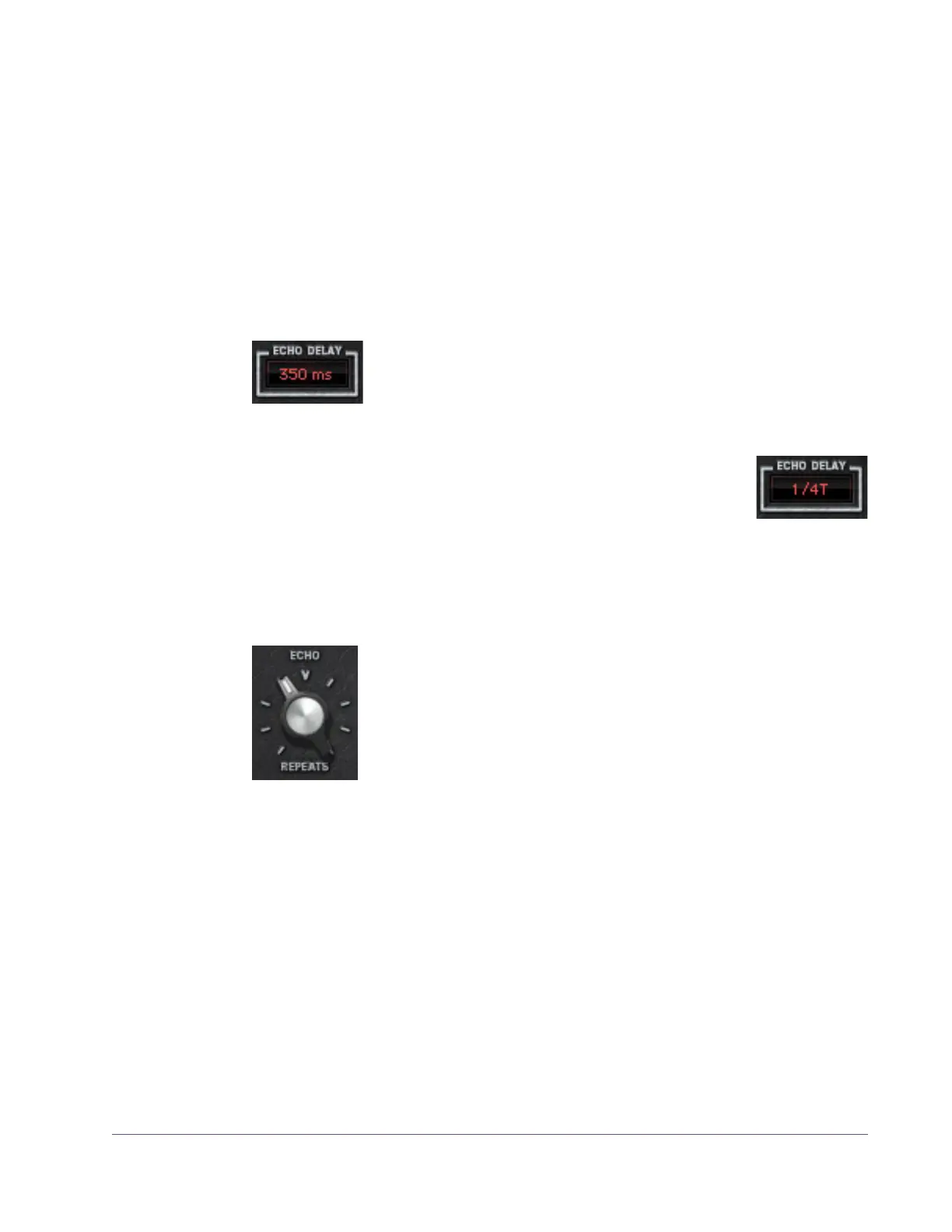UAD Powered Plug-Ins Manual - 128 - Chapter 11: EP-34 Classic Tape Echo
The available delay range is 80 to 700 milliseconds. When Sync is active,
beat values from 1/64 to 1/2 can be selected.
When the beat value is out of range, the value is displayed in parenthesis.
This occurs in Sync mode when the time of the note value exceeds 700ms (as
defined by the current tempo of the host application). See Chapter 8 in the
UAD System Manual for more information about tempo synchronization.
Tip: Click the control slider(s) then use the computer keyboard arrow keys to
increment/decrement the sync value.
Echo Display This “window” displays the current delay time of the EP-34.
Displayed values are defined by the Echo Delay parameter
(page 127). Delay values can be entered here directly using
the text entry method.
When Sync mode is off, delay times are expressed in millisec-
onds. When Sync is on, delay times are expressed as a frac-
tional bar value.
When the beat value is out of range, the value is displayed in parentheses.
This occurs in Sync mode when the time of the note value exceeds 700ms (as
defined by the current tempo of the host application).
Echo Repeats This knob controls the repeat level (feedback) of the echo sig-
nal. At the minimum (fully counter-clockwise) position, only one
repeat is heard. Rotating the control clockwise increases the
number of echoes. Higher values will cause self-oscillation.
The self-oscillation of the EP-34 is one of the magic features that
really makes it more than a mixing tool, it’s also an instrument
to be played. The effect may be used subtly, sending the unit into gentle os-
cillation on held notes, or can be put into “over the top” oscillation with ex-
treme settings.
The EP-34’s oscillation qualities are heavily dependent upon program mate-
rial and control settings. Different sources of audio, gain, tone, repeat rate
and input settings will all effect “oscillation performance.” The EP-34 can also
achieve oscillation with no signal, making the it a truly unique instrument.

